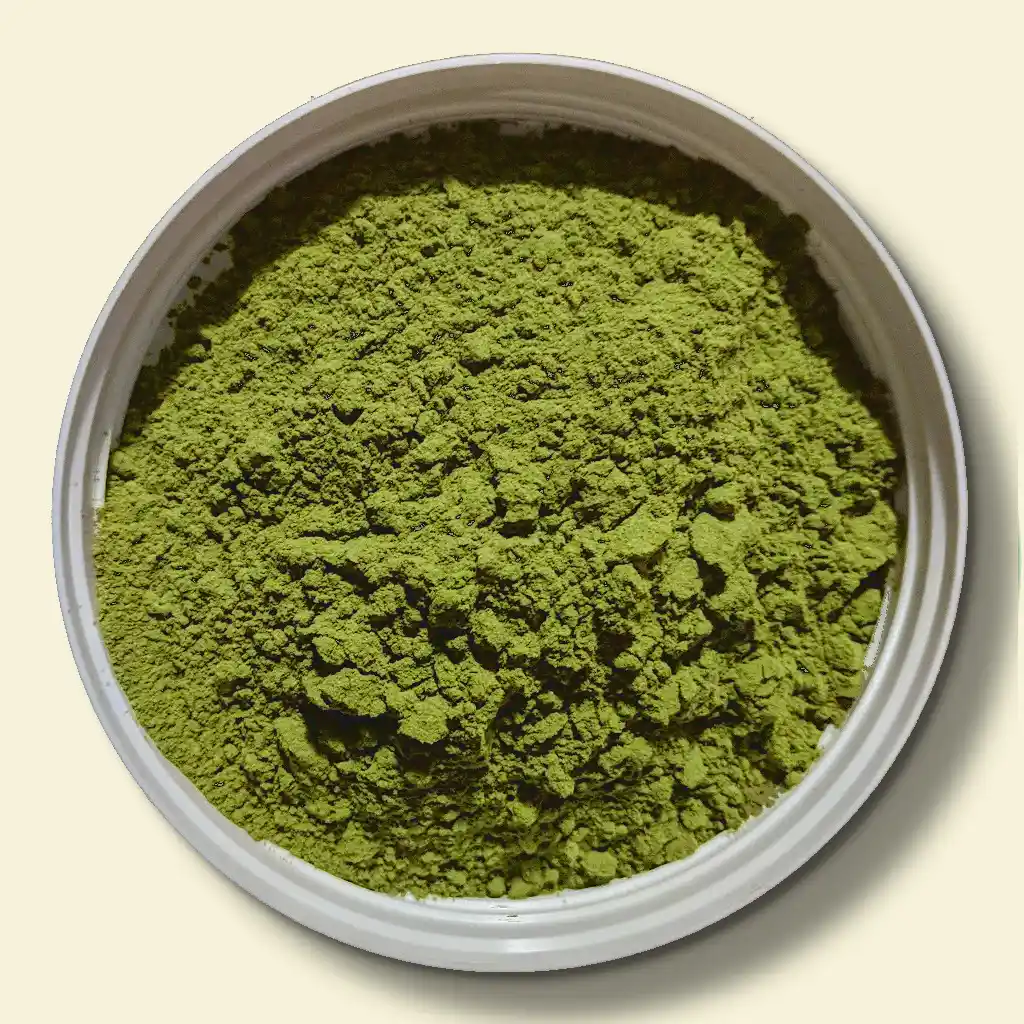Have you ever been in the middle of a conversation about Kratom and felt embarrassed because you weren’t sure how to pronounce it? Don’t worry, we’ve got your back! We want to help consumers everywhere have confident conversations – so let’s clear up any confusion around exactly how to pronounce kratom like you’re an expert.
Keep reading if you want to learn all about the correct way to refer to kratom, including how it’s pronounced correctly by experts and enthusiasts alike. Plus get some pro tips to avoid wasting your time and money on the same unremarkable products.
Is There a Right Way to Say It?
Plant scientific names are a way of classifying plants and other organisms. The scientific name of a plant is made up of two parts: the genus and the species. The genus is the first part, and it’s usually written in capital letters.
For example, the binomial nomenclature for kratom is Mitragyna speciosa. The second part, the species, is written in lowercase letters. The term can be pronounced in two ways: “MY-tra-ginah” or “ME-tra-ginah.” Both methods are correct, but most people prefer to use the former because it sounds more natural when spoken aloud.

Origins of the Word “Kratom”
The word “kratom” has an intriguing origin, deeply rooted in the cultural and botanical history of Southeast Asia. Kratom, scientifically known as Mitragyna speciosa, is a tropical evergreen tree native to this region, particularly in countries such as Thailand, Indonesia, and Malaysia.
The plant has been used traditionally for centuries by local communities for its various medicinal properties and as a part of their cultural practices. The etymology of “kratom” can be traced back to the native language of Thailand, where it is derived from the word “kra-thom,” which refers to this relative of the coffee tree.
The name itself provides insight into the plant’s significance in Thailand’s culture. “Kra” is a prefix used in this part of the globe to denote a water-loving plant, while “thom” is an abbreviation of “thambun,” a Thai word that means to make merit or do good deeds. This suggests that the kratom tree was associated with positive attributes and was held in high regard by the local communities.
In addition to its Thai origins, the word “kratom” also bears similarities to other regional names for the plant. For example, in Malaysia, it is known as “ketum,” while in Indonesia, it is called “purik.” These linguistic connections further highlight the widespread use and importance of kratom in the traditional practices of Southeast Asian communities.
Over time, “kratom” has transcended its regional roots and become widely recognized across the globe. As the popularity and demand for the leaf continue to grow, it serves as a testament to the plant’s enduring cultural and historical significance in its native lands.
Kratom Pronunciation in Asia & Beyond
Regional nuances play a crucial role in shaping the linguistic landscape of any area, and their influence can be observed in the way words are pronounced, including that of “kratom.” As people from different geographical areas come into contact with the word, they tend to adapt its pronunciation based on the phonetic rules and conventions of their native language.
This process results in a variety of ways to say the same word, reflecting the rich tapestry of cultural and linguistic diversity across regions. For instance, in the United States, where English is the dominant language, kratom pronunciation typically follows English phonetic rules. The most common way for American kratom aficionados to say it is “kray-tum,” rhyming with “atom.”
However, in the United Kingdom, the pronunciation may vary, with some speakers using a short ‘a’ sound, as in “cat,” resulting in the pronunciation “krat-um.” In the areas in which the plant originates, the pronunciation adheres to the local languages and dialects. In Thailand, the word is pronounced as “kra-thom,” or “kruh-tome,” while in Malaysia, it is called “ketum,” and in Indonesia, it is known as “purik.”
These variations in pronunciation not only highlight the impact of regional speaking mechanics but also demonstrate how languages evolve and adapt over time and across geographical boundaries. As kratom becomes increasingly popular worldwide, it is likely that its pronunciation will continue to diversify, reflecting the unique linguistic characteristics of each region.

Common Mispronunciations and Why They’re Wrong
Common mispronunciations of “kratom” often arise due to unfamiliarity with the word’s origin and the influence of that particular area’s way of saying certain vowels. Some people might pronounce it as “kra-tome,” rhyming with “chrome,” or “krah-tum,” with a short ‘a’ sound, as in “cat.”
These variations may be incorrect because they do not adhere to the original pronunciation in its native territories. When pronouncing foreign words, it is essential to consider the phonetic rules and conventions of the source language to maintain accuracy and respect for cultural nuances.
However, it is crucial to acknowledge that languages are continually evolving, and variations in pronunciation can be seen as a reflection of the rich diversity of linguistic influences across the globe.
What’s the Right Pronunciation of Kratom?
After all this, where are we at in terms of a “right” pronunciation? While there may not be one set way to say it, the recommended method is often the most commonly used one, as it facilitates effective communication by adhering to the familiar conventions of the majority.
By using the most widely recognized pronunciation, we ensure that our intended message is clearly understood by others. In the case of kratom, the most common pronunciation in the United States is “kray-tum,” utilizing a long ‘a’ sound.
However, it is crucial to remain open to other ways, acknowledging regional dialects, and cultural influences that shape the way we speak. Ultimately, the primary goal of language is to convey thoughts and ideas, and the most effective way to achieve this is by using words and pronunciations that resonate with the intended audience.

The Pronunciation of Kratom’s Most Tricky Strain Name
Maeng Da is arguably the most well-known kratom strain around and it’s become known as one of the most potent types around. Despite its popularity, few people are confidently saying it out loud, especially around other kratom consumers they have never met before.
The customary way of pronouncing it is “mang-dah” or “meng-dah.” The first syllable, “Maeng,” has a vowel sound resembling that in the words “hang” or “hence.” The second syllable, “Da,” should be pronounced with a short ‘a’ sound, similar to the ‘a’ in the word “cup.”
What to Look For When Choosing Kratom
When searching for the best source of clean, consistent kratom products, there are several factors to consider. One crucial aspect is the freshness and potency of the kratom, which is why farm-fresh small batch kratom is superior to mass-produced mainstream products.
Small batch kratom ensures that the product is harvested recently, maintaining its potency and quality. In contrast, mass-produced kratom often sits on warehouse shelves for months before reaching smoke shops or gas stations, gradually losing its potency, taste, and aroma over time.
Another essential factor in selecting a reliable kratom source is the company’s commitment to testing its products for microbial contaminants and heavy metals. This process ensures that the kratom you consume is safe and free from harmful substances, providing peace of mind and protecting your health.
A reputable company will have its products tested by third-party laboratories, ensuring unbiased results and transparency in their processes. Many companies claim to do this, but very few actually follow through and make updated records readily available to consumers.
Q&A
Where does kratom come from?
Kratom is a tropical evergreen tree native to Southeast Asia. It predominantly grows in countries like Thailand, Indonesia, Malaysia, Myanmar, and Papua New Guinea. The leaves of the kratom tree have been traditionally used for centuries in these regions for their medicinal and recreational properties, due to the presence of various alkaloids, including mitragynine and 7-hydroxymitragynine.
What is the etymology of the name “kratom”?
The name “kratom” has its origins in the Thai language, where it is called “krathom” (กระท่อม) or “ketum” in Malaysia. The word is derived from the local vernacular for the Mitragyna speciosa tree, which is known for its characteristic leaves with a unique shape resembling a bishop’s mitre.
The genus name “Mitragyna” was given by the Dutch botanist Pieter Willem Korthals in the 19th century, as he noticed this resemblance to the mitre, a ceremonial head-dress worn by bishops. Over time, the name has been anglicized and variations such as “kratom,” “kratum,” or “cratom” have emerged in English-speaking regions.
What is the correct pronunciation of “kratom”?
The pronunciation of “kratom” may vary slightly depending on regional accents and local linguistic styles. However, the most common and widely accepted pronunciation in English is KRAY-tum. Other pronunciations sometimes used are KRAH-tum (rhyming with “bottom”) or KRAT-TOM (rhyming with “atom”). All three pronunciations are considered correct, but the first one is more prevalent in general usage.
How is it said in the tree’s native regions?
In the native regions where the kratom tree (Mitragyna speciosa) grows, the locals have their own ways of referring to it. The most common terms used in these regions are krathom – pronounced as “kra-TOME” (Thai: กระท่อม) – and ketum – pronounced as “keh-TUM” (Malay/Indonesian).
How do you pronounce the names of kratom’s major alkaloids?
Kratom contains several alkaloids, but the two major ones that are most commonly discussed due to their potency and effects are mitragynine and 7-hydroxymitragynine. Here’s how to pronounce their names:
Mitragynine: my-TRAH-gi-neen
7-Hydroxymitragynine: SEV-en-hy-DROX-ee-my-TRAH-gi-neen
These ways follow standard English phonetic conventions and should make it easier for you to discuss kratom’s major alkaloids with others.
Where does kratom come from?
Kratom is a tropical evergreen tree native to Southeast Asia. It predominantly grows in countries like Thailand, Indonesia, Malaysia, Myanmar, and Papua New Guinea. The leaves of the kratom tree have been traditionally used for centuries in these regions for their medicinal and recreational properties, due to the presence of various alkaloids, including mitragynine and 7-hydroxymitragynine.
What is the etymology of the name “kratom”?
The name “kratom” has its origins in the Thai language, where it is called “krathom” (กระท่อม) or “ketum” in Malaysia. The word is derived from the local vernacular for the Mitragyna speciosa tree, which is known for its characteristic leaves with a unique shape resembling a bishop’s mitre. The genus name “Mitragyna” was given by the Dutch botanist Pieter Willem Korthals in the 19th century, as he noticed this resemblance to the mitre, a ceremonial head-dress worn by bishops. Over time, the name has been anglicized and variations such as “kratom,” “kratum,” or “cratom” have emerged in English-speaking regions.
What is the correct pronunciation of “kratom”?
The pronunciation of “kratom” may vary slightly depending on regional accents and local linguistic styles. However, the most common and widely accepted pronunciation in English is KRAY-tum. Other pronunciations sometimes used are KRAH-tum (rhyming with “bottom”) or KRAT-TOM (rhyming with “atom”). All three pronunciations are considered correct, but the first one is more prevalent in general usage.
How is it said in the tree’s native regions?
In the native regions where the kratom tree (Mitragyna speciosa) grows, the locals have their own ways of referring to it. The most common terms used in these regions are krathom – pronounced as “kra-TOME” (Thai: กระท่อม) – and ketum – pronounced as “keh-TUM” (Malay/Indonesian).
How do you pronounce the names of kratom’s major alkaloids?
Kratom contains several alkaloids, but the two major ones that are most commonly discussed due to their potency and effects are mitragynine and 7-hydroxymitragynine. Here’s how to pronounce their names:
- Mitragynine: my-TRAH-gi-neen
- 7-Hydroxymitragynine: SEV-en-hy-DROX-ee-my-TRAH-gi-neen
These ways follow standard English phonetic conventions and should make it easier for you to discuss kratom’s major alkaloids with others.


Latest from our blog
Please Read….This is Urgent
In loving memory of Ryan, a special individual who recently passed away, we honor his [...]
Damiana Exposed: Special Look At Turnera diffusa (2023)
Damiana Exposed: Special Look At Turnera diffusa (2023) Damiana is a wild shrub native to [...]
Kanna: A New Look At An Exciting Mood Booster (2023)
What is kanna? Some say the botanical has similar effects to MDMA, or ecstasy. Others [...]
Blue Lotus Flower: Unveiling Its Mystical & Therapeutic Powers
To cut to the chase and pickup potent 25x blue lotus extract today while enjoying [...]
Red Bubble Kratom Extraction: A Comprehensive Guide
As a kratom enthusiast, have you ever wondered if there was a method for getting [...]
Aug
Maeng Da Kratom 101: Accurate Info You Can Trust
Maeng Da kratom may be the most popular kratom strain on the market today. The [...]
Aug